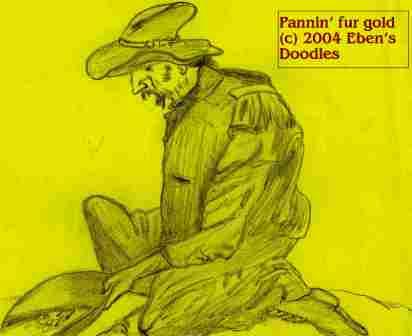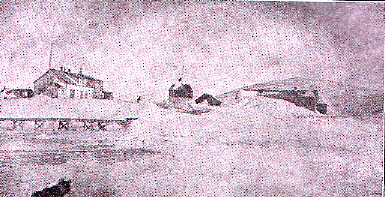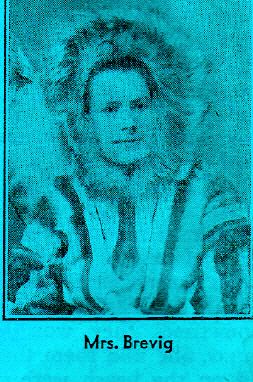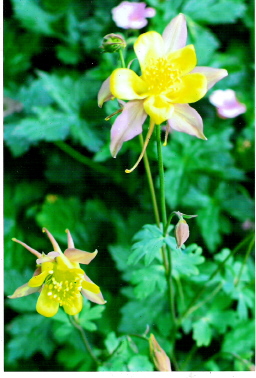
"A-Yang-E-Lokh-Tokh,"
"God's Man,"
Carrying the Gospel to "Alayaska," the "Great Country," by Mrs. C. K. Malmin
--Prepared for the 50th Anniversary of Mission Work in Alaska--
Chapter 2

Days passed by. In a week we reached Unimak pass in the Aleutians and entered the Behring Sea. Among the passengers were Alaskans returning home. We heard names that were strange to us then, but now are familiar to everyone, Dutch Harbor, Kodiak, Fairbanks, Seward, and Anchorage. There were government teachers bound for Pt. Barrow, Cape Prince of Wales, and St. Lawrence Island. We heard talk about "pokesacks" filled with golddust, about dog teams competing in the "Alaska Sweepstakes" at Nome, and about Reindeer Fairs, when delegates gathered from all over Seward peninsula.
At last Nome was sighted. A gray weatherbeaten town spread out on the beach. No harbor! The Umatilla anchored a mile from shore. A tug boat towing a barge came out to take off passengers, luggage, and mail. We met Theo. Gulhaugen when we came ashore. He had spent the preceding year at the mission and was now returning to Luther Seminary to complete his studies. He introduced us to Judge Lomen and his family. We learned something about the early history of Nome, when gold was discovered in the gravel on the beach. Even yet old prospectors were digging and actually finding a little dust.

We were absorbing little by little the "feel" of a strange new land. Even the sun didn't follow the pattern we were accustomed to. We had seen that it seemed to travel at an angle of 45 degrees. It dipped below the horizon and the afterglow faded into a long twilight. We could read the newspaper at eleven o'clock in the evening, out of doors.

We reached the Teller Mission at two in the morning, and it was light already. It was August, and fall was at hand. Suddenly, we ralized that we had reached the "Land of the Midnight Sun." And it does not have six months of day, and six of night as we had been told. Far from it. The long twilight hours morning and evening add hours of light even to the shortest winter days. And those days can be lovely. Everything is white, and the long rays of the sun, hidden beneath the horizon, paint the soft clouds with delicate pastel colors. Such is the land where the Eskimos live.
When the Mailboat anchored off shore at the Mission that early August morning, we saw a white woman and a few Eskimos on the beach. Miss Jorgine Enestvedt was there to meet us. We came ashore in the dory, with our luggage and the mail. We learned that the S.S. Cordova had arrived. The mission freight was on the beach. As we slowly walked up the hill to the Julia Brevig Mission and felt the chill of the sea air, we couldn't help thinking that the Fossos were lucky. They had come home. Our home was yet to be built.
As Miss Enestvedt took us on a tour of inspection later in the day, she told little by little the story of the men and women who had been there, relating many little incidents that gave us an insight into their personalities. She spoke of the Tornoes who had relieved Rev. Brevig in the summer of 1908.
Rev. Tornoe had felt that a church should be built at Mary's Igloo, and that native evangelists should be trained to work among their people.
Rev. and Mrs. H.M. Tjernagel had come up in 1910. The pastor who was the chairman of the mission committee, left his Stanwood parish to go himself, when he could not get some one to relieve the Tornoes.
The Tjernagels were very well liked. But the pastor felt that an interpreter could not bring the spiritual comfort and guidance that a pastor would like to give his people. He felt this most keenly when he sat at the bedside of the sick or dying. He therefore recommended that young men be called who could quickly learn the language.
It was hardest for Miss Enestvedt to talk about Mrs. Brevig. She went back to the early years when they returned after their first furlough. It was in 1900. The natives were dying of measles; the Lapp herders had left and the reindeer must be taken care of, the orphans must be housed and fed. And the Brevigs had two small children themselves now--Dagny and a baby sister. They must act quickly.
Dr. Jackson again came with help. Somehow they got themselves settled in the old building. Food and clothing for the orphans were gathered here and there. And life at the station began to follow a clearer pattern.

Mrs. Brevig was a delightful person. The Eskimos adored her. She could speak their language, and somehow she had been able to make the unaccustomed duties more fun than work.
If the children hurried, she would take them on hikes back into the tundra, along a little wooded stream where they could have a picnic. They gathered wild flowers, tall blue foreget-me-nots, Indian paintbrushes and wild phlox, and put them in vases when they returned.


She told them that the birds that came every summer to nest up there flew thousands of miles from their winter homes far to the south. They learned the names of songbirds, and sometimes they would find their nests. She told them that the poppies on the beach were called "California Poppies" back home. In the evenings they learned to sing, and Pastor Brevig led them in Bible reading and prayer.
She died at the Mission in March, 1908. Rev. Brevig, during his years in Alaska, traveled to Shishmaref, Mary's Igloo, Council and White-mountain, teaching, preaching,and baptizing--striving to reach as many as possible. He spent 22 years in all, with furloughs included, at Teller. And his furloughs were spent in traveling, and speaking, trying to buyild up interest in the Eskimo Mission and to raise money to build the orphanage that Mrs. Brevig had helped to plan.
It was taken into use in 1907. His last term fromn 1913 to 1916 was spent with his daughter Dagny who came with him as government teacher. She, like her mother, spoke Eskimo, and needless to say, was a great success.
It did not take us long to discover how much Miss Enestvedt was loved and respected. She had been at the Mission since 1905, including furloughs. The orphans had grown up and left the mission. But when they gathered after church to have Sunday dinner she mingled with them as a kindly hostess at a homecoming. She must see the newest baby and hear the news. To her they were the children who had grown up, married, and made their own homes, but gathered on Sunday for services and a "family dinner."
She had the unusual experience of spending some time with all the different missionary families at the Teller mission, including the Dahle family, who came in 1921. The missionaries' children will also remember her for the delightful stories that she never tired of telling. She never said No, when the little voices called, "Miss Enestvedt, will you tell us a story?"
PLEASE GO TO THE EQUALLY EXCITING CHAPTER 3 OF "GOD'S MAN," BY MRS. C. K. MALMIN

"God's Man," Alaskan Missions, Chapter 3, by Mrs. C. K. Malmin, missionary to Alaska
The Emmaus Walk Home Page

(c) 2006, Butterfly Productions, All Rights Reserved

